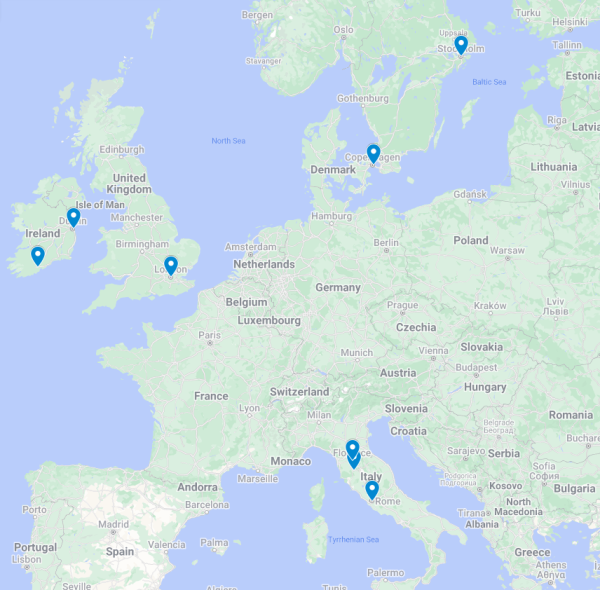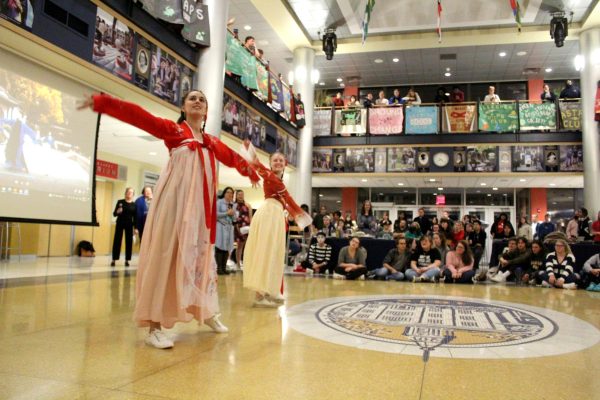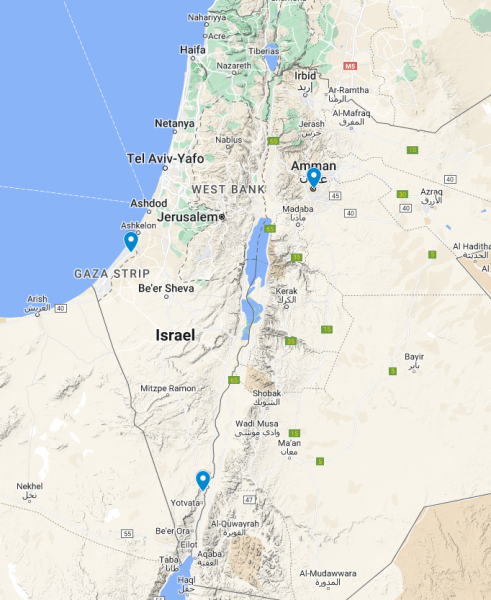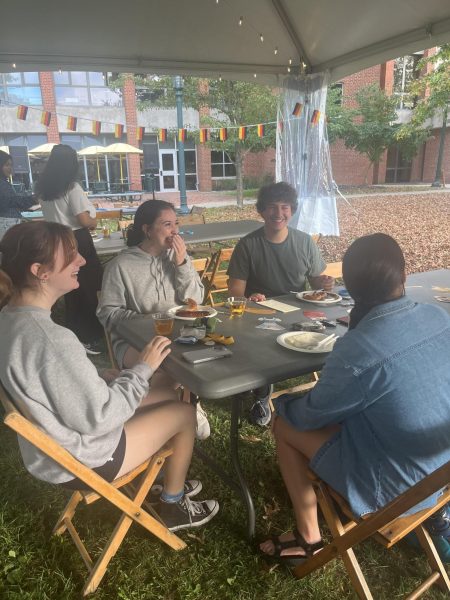Exploring Bosnia
Cultural center brings classroom topics to life
More than 30 Allegheny students travelled to the Bosnian Islamic Cultural Center in Erie on Saturday, April 2. The trip was headed by Younus Mirza, assistant professor of religious studies, and was mostly made up of students from the Modern Islamic Movements class.
“I am enthusiastic about this trip because it will touch upon many of the themes we have talked about such as jihad, civil strife, war, violence, Islamophobia and refugees,” said Mirza. “Moreover, the Bosnian crisis was recently in the news with the genocide conviction of the Bosnian Serb leader.”
Radovan Karadzic, the former Bosnian Serb leader, was convicted of war crimes during the Bosnian War.
Shortly after settling into the banquet hall, Almir Selimovic, president of the Bosnian Islamic Cultural Center, introduced himself and offered snacks and a traditional bread and sausage dish, cevapi, to the students.
Selimovic gave a short talk that began with an outline of the demographics of Bosnia. Following this, Selimovic talked about the Bosnian War. He outlined the conflict and included personal stories, including being separated from his father and uncles during the conflict before they all immigrated to the United States together in 2001. He was four years old when the war began.
“My mother and father had to make a decision,” said Selimovic. “The war is over, but the wounds still hurt today.”
Selimovic also explained why there is a large Bosnian presence in Erie. For Selimovic personally, he knew family in Erie and said that the United States Government tries to place you with anyone you may be familiar.
From 1995 to 1999, waves of Bosnian refugees settled in Erie. There are currently about 150 families making the population a little over 2,000 Bosnians in Erie, according to Selimovic.
Afterwards, other members who work with the Bosnian Islamic Cultural Center went around each table in order to give the students a one-on-one experience and to answer any other questions they may have.
Emina Alicusic, director of cultural development at the Bosnian Islamic Cultural Center, discussed the work she does with Bosnians in the community. Alicusic works mostly with kids about how to integrate into American culture and still be able to keep their Bosnian heritage. According to Alicusic, she finds it easier to work with kids as the older someone is, the more they want to keep their own culture.
Selimovic gave an example about how his father worked a job below his personal experience, but the language barrier made him too uncomfortable to work a job at the level he should have.
Later, a tour of the Bosnian Islamic Cultural Center was offered a which included visiting the kitchen, gathering hall, gymnasium and offices. When the Bosnian Islamic Cultural Center in Erie wants to reach out to other communities such as St. Louis, the largest Bosnian community in the nation, they turn their gymnasium into a banquet hall as they meet, dance and worship together. The center is also close with the Turkish community, according to Selimovic.
“I found the talk very interesting, said Troy Dreistadt, ’17. “We talked briefly in class about the Bosnian war, but to hear about it from someone who experienced it was a more effective tool.”






